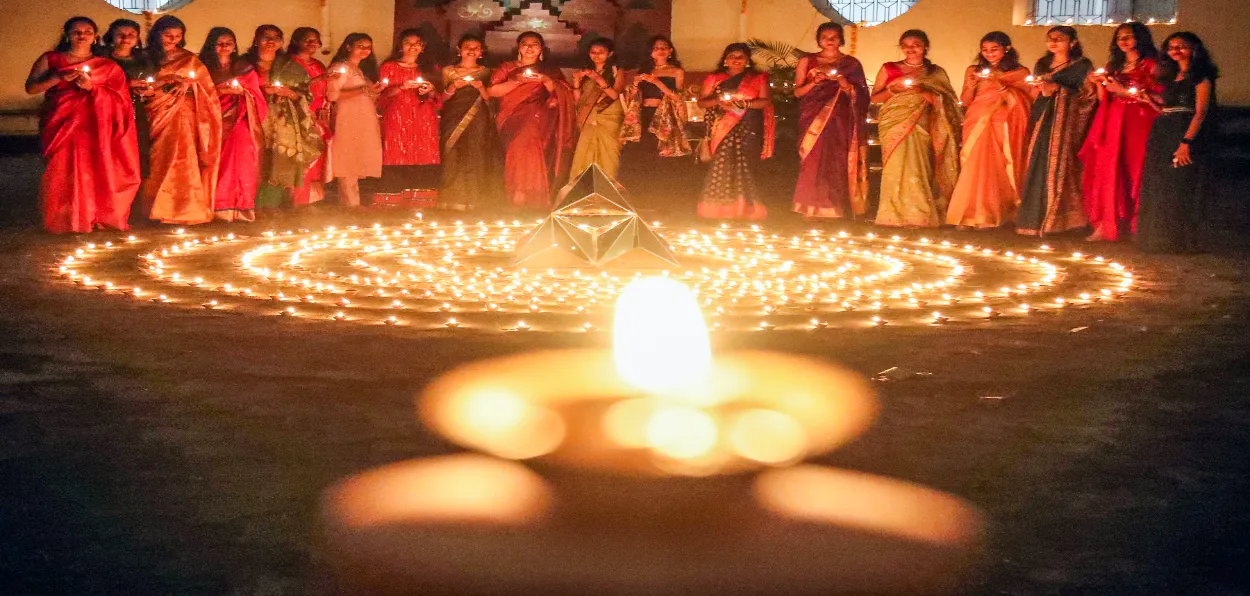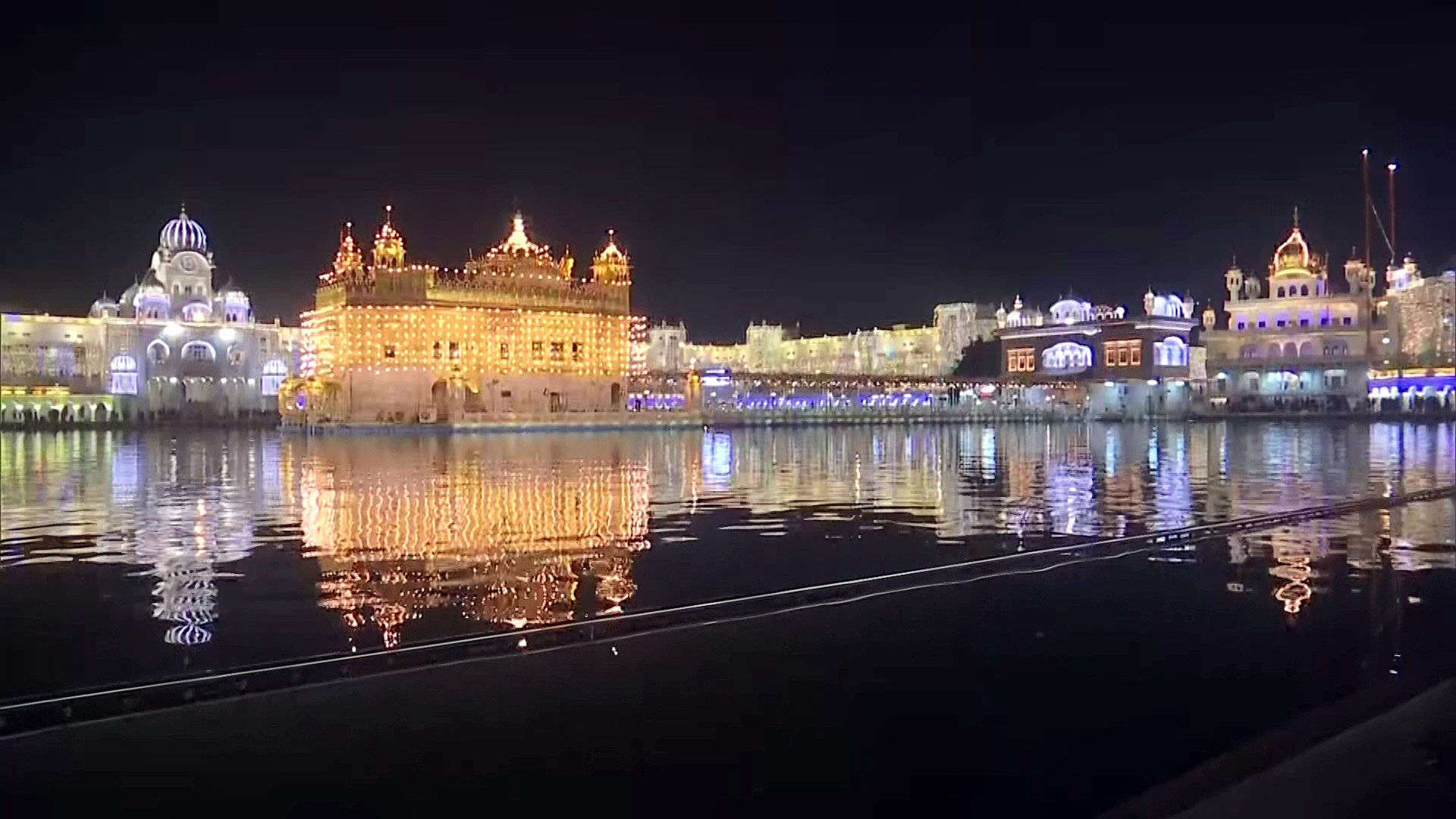
Amir Suhail Wani
Diwali, the Festival of Lights, is one of the most radiant religious celebrations symbolising the triumph of light over darkness, knowledge over ignorance, and good over evil. Houses are adorned with earthen lamps, candles, and electric lights, turning night into a luminous spectacle. The glow that fills every household is not merely decorative — it is deeply symbolic, representing the light of the divine dispelling the inner shadows of fear, greed, and hatred.
While Diwali has multiple mythological associations — the return of Lord Rama to Ayodhya after defeating Ravana and completing his 14-year exile, the worship of Goddess Lakshmi, the Goddess of Wealth, and Lord Krishna’s killing of demon Narakasura — its underlying essence transcends specific stories.
It is a universal call for awakening, renewal, and spiritual clarity. The lighting of lamps becomes an act of faith, signifying humanity’s perpetual hope that truth and virtue will prevail despite all obscurity.

A house decorated on Diwali
In Hindu philosophy, light (jyoti) symbolises Brahman — the supreme consciousness that illuminates all existence. The Upanishads describe this metaphysical light as “the light of all lights” (param jyotir), dwelling within the self. Ignorance (avidya) is the darkness that veils this inner radiance. Thus, the lighting of lamps during Diwali can also be understood as a metaphor for dispelling the darkness of ignorance through knowledge and self-realisation.
The Bhagavad Gita further extends this symbolism, portraying the divine as the “light that shines beyond the sun, moon, and fire,” revealing that enlightenment is not external but internal. Each diya lit on Diwali night becomes a prayer for inner awakening — a reminder that the path to peace begins with illuminating one’s own consciousness.
The imagery of light and darkness is not unique to Hinduism; it forms a spiritual language common to many world religions, expressing the universal human yearning for truth and transcendence. In Buddhism, light represents bodhi, enlightenment or awakening. Buddha is often called the “Light of Asia,” and his teachings are likened to a lamp that shows the way out of suffering.
The festival of Vesak, commemorating the Buddha’s birth, enlightenment, and death, is celebrated with the lighting of lamps and candles, echoing the same symbolism as Diwali — the victory of awareness over ignorance.
For Jains, Diwali holds a particular significance as it marks the attainment of nirvana by Lord Mahavira, the 24th Tirthankara. On this night, the “light of knowledge” (keval gyan) was said to have been kindled in the universe. Jains therefore light lamps not to celebrate worldly victory, but to honour the light of pure consciousness and liberation from material bondage.
In Sikhism, Diwali is celebrated as Bandi Chhor Divas, commemorating the release of Guru Hargobind Sahib Ji from imprisonment, along with 52 other kings. The Golden Temple in Amritsar glows with thousands of lamps, symbolising the victory of righteousness; the divine guidance that leads humanity from captivity, both physical and spiritual, into freedom. The Sikh scriptures also speak of the “inner light” (jot) present in every being, a spark of the Creator that must be nurtured through devotion and righteous living.

Golden Temple on Diwali
Christianity, too, abounds in imagery of light as divine truth and salvation. Jesus is described in the Gospel of John as “the light of the world,” who shines in the darkness, and the darkness does not overcome it. The lighting of candles in churches symbolises faith, hope, and the presence of the Holy Spirit. Festivals such as Christmas and Easter reaffirm that divine light can redeem even the deepest darkness of sin and despair.
In Islam, the Qur’an describes God (Allah) as “the Light of the heavens and the earth” (An-Nur, Surah 24:35). This divine light is a symbol of truth, mercy, and guidance that dispels the darkness of misguidance and disbelief. The oil lamp mentioned in this verse becomes an allegory for the illuminated heart of the believer — shining through purity, faith, and righteous action.
Across faiths and civilisations, the imagery of light and darkness carries a profound moral and psychological dimension. Light is not only physical illumination but also intellectual clarity, spiritual purity, and moral integrity. Darkness, conversely, is not evil in itself but represents ignorance, confusion, and moral blindness. The interplay between these two forces reflects the human condition — our journey from confusion to understanding, from despair to hope, and from materiality to transcendence.
In a world often shadowed by conflict, division, and ecological imbalance, Diwali’s message resounds with renewed urgency. The act of lighting a lamp is a declaration of faith in goodness, harmony, and human solidarity. It reminds us that collective transformation begins with individual enlightenment. When each person tends to the light within — through compassion, wisdom, and truth — the sum of these inner lamps can illumine even the darkest corners of society.
ALSO READ: Was the two-nation theory brainchild of Sir Syed Ahmad Khan?
Thus, Diwali is not just an Indian festival; it is a spiritual metaphor for humanity itself — for the ceaseless quest to overcome darkness with light, ignorance with understanding, and hatred with love. It is a celebration of the divine spark that resides in every heart, waiting to shine forth.
